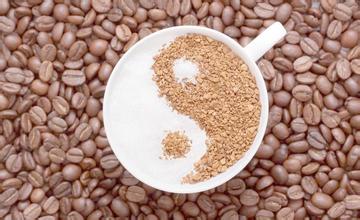Introduction to the culture of Panamanian coffee producing areas with solid sweetness, mild and clean balance
Coffee was introduced into Panama in 1780, when Europeans introduced the first Typica tree species. After that, this mysterious and strange drink conquered the senses of Panamanians, and the local people began to grow it widely.
Casa Ruiz, S.A., Panama. Manor, founded in 1920, is located in the Boquete producing area of Baru Volcano Volcano, which is located in the Poquet Valley in the skirt of Baru Volcano in northwestern Panama. Has experienced three generations of coffee planting experience, Caesar Louise (Casa Ruiz, S.A.) The family has brought together more than 300 local small family farms and small estate coffee farmers to join partners from planting, reprocessing, baking and marketing, unlike a single manor that cannot increase production scale. Coffee varieties are Typica, Caturra, Catuai, Mundo Novo and Bourbons. The average annual rainfall is 3000 millimeters (between May and November), the annual average temperature is 14,000 degrees C, and the altitude is more than 1400 meters. Casa Ruiz, S.A. The family and his coffee partners chose to follow the Boquete growing area, which is traditionally environmentally friendly and maintains the natural ecosystem, and because the natural trees in the area provide rich natural environmental resources, the environment has become a transit habitat for migratory birds.
Casa Ruiz, S.A., Panama. Because of his high-quality technology, strict control of every detail, layer upon layer of screening, recording and review, he is undoubtedly one of the best estates in Best of Panama. This batch is exported through his own company, from raw bean appearance, consistency and freshness to dry aroma and flavor, with very distinctive aroma performance, clean and fresh taste, strange fruit flavor and aroma. Exudes elegant and charming floral fragrance, rice, almond tea, ripe apple, fermented ripe fruit mellow, raspberry, cherry, jujube, brown sugar, jasmine, orange, sweetness, mild and clean balance, long-lasting, lively and rich fruit

Important Notice :
前街咖啡 FrontStreet Coffee has moved to new addredd:
FrontStreet Coffee Address: 315,Donghua East Road,GuangZhou
Tel:020 38364473
- Prev

The main coffee producing areas in Tanzania introduce the fire area of the Gilimazaro Mountains in the northern highlands.
Coffee is one of the main cash crops in Tanzania, ranking fourth after cotton, tobacco and cashew nuts, mainly sold to Italy, Japan and the United States. Coffee exports play an important role in the national economy of Tanzania. Tanzania's main coffee producing area is located at the foot of Mount Kilimanjaro, which is rich in volcanic soil and coffee trees planted here.
- Next

Introduction of San Marta Snow Mountain, one of the high-quality producing areas in Colombia
Colombian coffee is located in the Andes, where the mild climate, humid air and good rainfall make it very suitable for coffee growth. According to its geographical location, Colombian coffee is divided into three producing areas: northern, central and southern, in which there are six high-quality coffee producing areas in Colombia, Sierra Nevada,Santander, Cauca, Huila,Nario and Paisaje cul.
Related
- Does Rose Summer choose Blue, Green or Red? Detailed explanation of Rose Summer Coffee plots and Classification in Panamanian Jade Manor
- What is the difference between the origin, producing area, processing plant, cooperative and manor of coffee beans?
- How fine does the espresso powder fit? how to grind the espresso?
- Sca coffee roasting degree color card coffee roasting degree 8 roasting color values what do you mean?
- The practice of lattes: how to make lattes at home
- Introduction to Indonesian Fine Coffee beans-- Java Coffee producing area of Indonesian Arabica Coffee
- How much will the flavor of light and medium roasted rose summer be expressed? What baking level is rose summer suitable for?
- Introduction to the characteristics of washing, sun-drying or wet-planing coffee commonly used in Mantenin, Indonesia
- Price characteristics of Arabica Coffee Bean Starbucks introduction to Manning Coffee Bean Taste producing area Variety Manor
- What is the authentic Yega flavor? What are the flavor characteristics of the really excellent Yejasuffi coffee beans?

